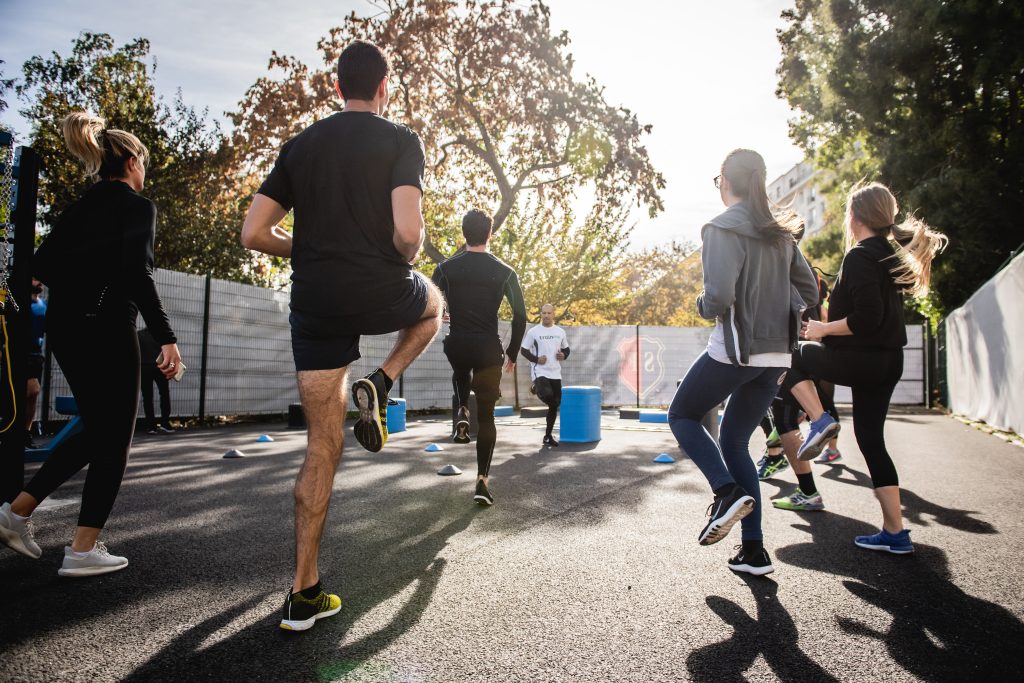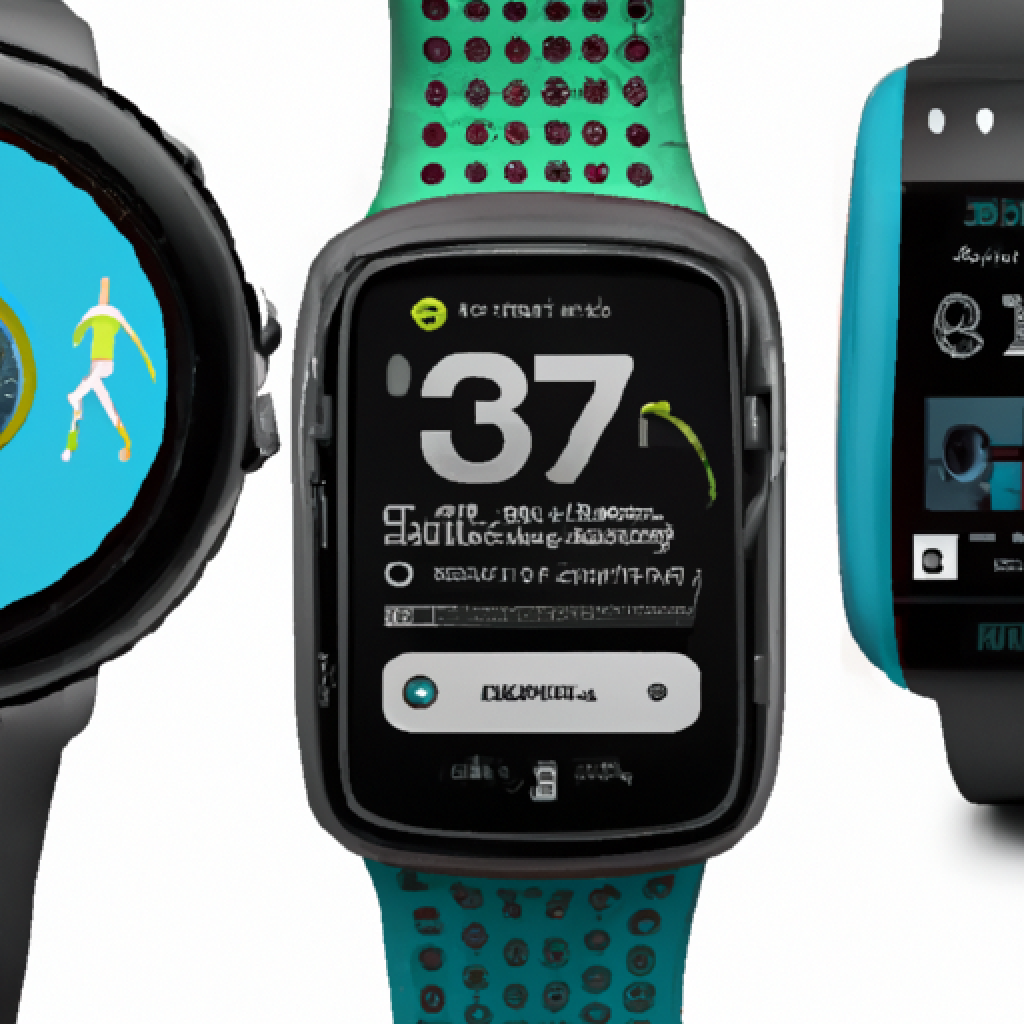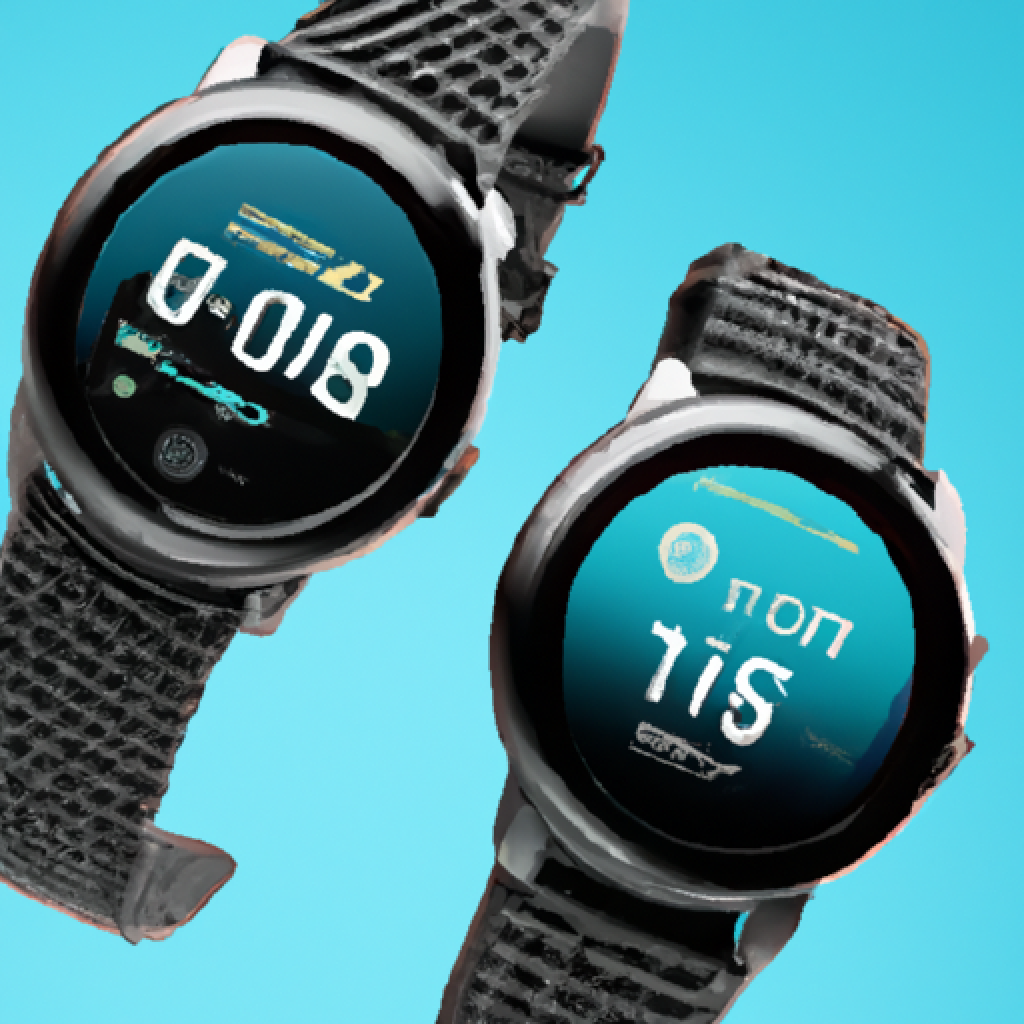Is Garmin Better Than Fitbit?

I’ve always been intrigued by the ongoing debate between Garmin and Fitbit. People are constantly comparing the two, trying to determine which one is superior. So, I decided to delve into the topic and explore the features, functionalities, and overall performance of both brands. Let’s examine whether Garmin truly reigns supreme over Fitbit or if it’s all just a matter of personal preference.
Understanding Garmin and Fitbit
Overview of Garmin
Garmin is a well-known brand in the world of fitness and health tracking devices. They offer a wide range of products, including fitness trackers, smartwatches, and GPS navigation devices. Garmin’s devices are known for their accuracy and reliability, making them a popular choice among athletes, outdoor enthusiasts, and health-conscious individuals. The company has been in the market for several years and has built a strong reputation for producing high-quality products.
Overview of Fitbit
Fitbit is another prominent player in the fitness tracking industry. Like Garmin, they offer a variety of devices that cater to different needs and preferences. Fitbit’s products range from simple fitness trackers to advanced smartwatches. The brand has gained popularity amongst fitness enthusiasts and individuals looking to improve their overall health and well-being. Fitbit is known for its sleek designs, user-friendly interfaces, and extensive health and fitness tracking features.
Key differences between Garmin and Fitbit
While both Garmin and Fitbit offer a range of fitness tracking devices, there are some key differences that set them apart. One major distinction is the target audience. Garmin tends to focus more on serious athletes and outdoor enthusiasts, offering advanced features such as GPS tracking and specialized modes for various sports. Fitbit, on the other hand, caters to a broader audience, including casual users who are looking to monitor their daily activity levels and improve their overall health.
Another difference lies in the design and durability of the devices. Garmin devices often have a more rugged and sporty look, with durable materials that can withstand harsh conditions. Fitbit, on the other hand, places a strong emphasis on style, offering sleek and fashionable designs that can be worn both during workouts and in everyday life.
The software and app experience is also an important factor to consider. Garmin’s software is known for its detailed data analysis and customization options, while Fitbit’s app provides a more user-friendly and intuitive interface. It ultimately comes down to personal preference and the specific features that are important to each individual user.
Device Variety
Range of devices offered by Garmin
Garmin offers a wide range of devices to cater to different needs and preferences. They have basic fitness trackers like the Garmin Vivosmart, which focus on tracking steps, calories burned, and sleep quality. For those who are more serious about their fitness goals, Garmin offers advanced fitness trackers like the Garmin Forerunner series, which includes models specifically designed for running, cycling, and swimming. Additionally, Garmin also has a line of smartwatches like the Garmin Vivoactive and Fenix, which combine fitness tracking features with smart notifications and GPS navigation.
Range of devices offered by Fitbit
Fitbit also offers a diverse range of devices to suit various lifestyles and fitness goals. They have entry-level fitness trackers like the Fitbit Inspire, which track basic activity and sleep patterns. Fitbit’s main product line consists of fitness trackers such as the Fitbit Charge and Versa, which provide more advanced features like heart rate monitoring and built-in GPS. Fitbit’s smartwatches, like the Fitbit Ionic and Sense, offer additional functionalities such as music storage, contactless payments, and apps.
Comparative analysis of device variety
When comparing the device variety of Garmin and Fitbit, it becomes clear that both brands offer a wide selection to choose from. Garmin has a stronger focus on specialized features for different sports and outdoor activities, while Fitbit offers a more well-rounded range that appeals to a broader audience. The choice ultimately depends on the specific needs, preferences, and fitness goals of the individual user.

Ease of Use
How user-friendly is Garmin?
Garmin devices are generally known for their user-friendly interfaces and intuitive navigation. The menus and settings on Garmin devices are easy to navigate, and most actions can be performed with a few taps or swipes. Garmin’s devices often come with physical buttons or touchscreens, making it easy to interact with the device, even during intense workouts or outdoor activities. The Garmin Connect app, which serves as the hub for syncing and analyzing data, is also user-friendly and provides a seamless experience for users to track their progress and set goals.
How user-friendly is Fitbit?
Fitbit devices are designed with simplicity and ease of use in mind. Fitbit’s user interface is straightforward and easy to navigate, with clear icons and menus. The devices often have touchscreens or a single button for navigation, allowing users to access different features and track their fitness data with ease. Fitbit’s app, the Fitbit App, is renowned for its user-friendly interface and provides users with detailed insights into their health and fitness metrics.
Comparing the user experience of Garmin and Fitbit
Both Garmin and Fitbit offer user-friendly devices and apps, but there are some subtle differences in the user experience. Garmin’s devices often have more advanced features and customization options, which can make the interface feel slightly more complex for beginners. Fitbit, on the other hand, focuses on simplicity and ease of use, making it more suitable for casual users or those who prioritize simplicity over advanced customization. It’s important to consider personal preferences and technological comfort when choosing between Garmin and Fitbit.
Fitness Tracking
Fitness tracking features of Garmin
Garmin devices are known for their comprehensive fitness tracking capabilities. They offer a wide range of features, including step counting, distance tracking, calories burned, and heart rate monitoring. Many Garmin devices also include advanced fitness metrics, such as VO2 Max estimation, recovery advisor, and training load analysis. Garmin’s devices often have sport-specific modes and can track various activities like running, cycling, swimming, and even golfing. Garmin’s focus on advanced sensors and accurate data ensures that athletes and fitness enthusiasts can monitor their performance and progress effectively.
Fitness tracking features of Fitbit
Fitbit is equally renowned for its fitness tracking features. Fitbit’s devices track steps, distance, calories burned, and provide continuous heart rate monitoring. Fitbit also offers sleep tracking functionalities, allowing users to monitor their sleep patterns and assess overall sleep quality. Fitbit’s devices come with automatic exercise recognition, which detects and logs workouts, making it convenient for users to track their activities. Additionally, Fitbit provides active zone minutes, which measure the time spent in different heart rate zones to help users optimize their workouts.
Comparative evaluation of the fitness tracking capabilities
Both Garmin and Fitbit excel in fitness tracking, offering a wide array of features to meet different user needs. Garmin’s focus on advanced metrics and sport-specific modes makes it a popular choice among athletes and fitness enthusiasts who require highly accurate data. Fitbit, on the other hand, provides a more holistic approach to fitness tracking, with features like sleep tracking and active zone minutes that cater to overall health and well-being. The choice between Garmin and Fitbit ultimately depends on the specific fitness goals and preferences of the user.

Health Monitoring
Health monitoring features of Garmin
Garmin devices go beyond fitness tracking and offer a range of health monitoring features. These include heart rate monitoring, sleep tracking, stress tracking, and even menstrual cycle tracking for female users. Garmin’s devices can provide insights into the user’s overall health and well-being, allowing them to monitor their heart rate patterns, track sleep stages, and manage stress levels. Garmin also offers features like hydration tracking and body battery, which assess the individual’s energy levels throughout the day.
Health monitoring features of Fitbit
Fitbit devices also prioritize health monitoring, providing users with valuable insights into their overall well-being. Fitbit’s devices offer continuous heart rate monitoring, sleep tracking, and a personalized sleep score to help users understand their sleep quality. Fitbit has also introduced a wellness report, which provides insights into heart rate variability, breathing rate, and oxygen saturation levels. Additionally, Fitbit provides stress management features and guided breathing exercises to promote relaxation and mental well-being.
Comparing health monitoring capabilities of Garmin and Fitbit
Both Garmin and Fitbit offer robust health monitoring features, allowing users to gain a deeper understanding of their overall health. Garmin focuses on a wide range of health metrics, which can be particularly useful for users who are interested in tracking specific health aspects like stress and hydration levels. Fitbit, on the other hand, emphasizes sleep tracking and stress management, providing users with actionable insights to improve their well-being. The choice between Garmin and Fitbit in terms of health monitoring capabilities depends on which metrics are of more importance to the individual user.
GPS Functionality
GPS features in Garmin
Garmin is well-known for its GPS capabilities, which are integrated into many of their devices. Garmin’s GPS tracks precise location coordinates and provides accurate data on distance, speed, and elevation during outdoor activities. This is particularly useful for runners, cyclists, hikers, and other outdoor enthusiasts who rely on GPS data for route navigation and performance analysis. Garmin’s GPS functionality is often complemented by additional features like breadcrumb trails and live tracking, enabling users to share their activity in real-time.
GPS features in Fitbit
Fitbit introduced built-in GPS in some of its devices in recent years. This feature enables users to track their outdoor activities without needing to carry their smartphones. Fitbit’s GPS tracks distance, speed, and route details, providing users with accurate data to analyze their performance. Fitbit’s GPS-enabled devices are particularly popular among runners and outdoor fitness enthusiasts who prefer the convenience of GPS tracking directly from their wrist.
A comparison of GPS functionalities
Both Garmin and Fitbit offer GPS functionalities in their devices, catering to outdoor enthusiasts and fitness-minded individuals. Garmin has a broader range of devices with built-in GPS, providing more options for users who require precise navigation and tracking. Fitbit, on the other hand, offers GPS in select models, primarily targeting runners and individuals who prefer to leave their smartphones behind during outdoor activities. The choice between Garmin and Fitbit in terms of GPS functionality depends on the specific needs and budget of the user.

Battery Life
Battery life of Garmin devices
Garmin devices are known for their impressive battery life, thanks to their efficient power management systems. The battery life varies depending on the specific device and usage, but most Garmin devices can last several days to weeks on a single charge. Basic fitness trackers often have the longest battery life, lasting up to a week or more, while smartwatches with more advanced features, such as GPS and music playback, tend to have shorter battery life, usually lasting a few days.
Battery life of Fitbit devices
Fitbit devices also offer respectable battery life, with most models lasting from a few days to a week on a single charge. The battery life depends on the device’s features and usage patterns, such as the frequency of GPS usage and music playback. Fitbit’s fitness trackers generally have longer battery life compared to their smartwatch counterparts, which offer additional features like color touchscreens and more advanced functionalities.
Comparative analysis of battery life
Both Garmin and Fitbit provide reliable battery life, ensuring that users can track their activities and monitor their health without constantly worrying about charging their devices. Garmin’s devices tend to have longer battery life for basic fitness tracking, making them a better choice for users who prioritize extended usage between charges. Fitbit’s devices offer a balance between battery life and additional features, making them suitable for users who require a blend of fitness tracking and smartwatch capabilities.
Price Comparison
Cost of Garmin products
Garmin offers a wide range of devices at different price points, catering to different budgets. Entry-level fitness trackers, such as the Garmin Vivofit, are usually priced under $100, providing basic activity tracking features. Mid-range devices, like the Garmin Forerunner and Venu series, cost between $150 and $400, offering advanced fitness tracking and smartwatch functionalities. Garmin’s high-end devices, such as the Fenix series, can range from $500 to $1,000, targeting serious athletes and outdoor enthusiasts who require specialized features.
Cost of Fitbit products
Fitbit devices are also available at various price points to accommodate different budgets. Entry-level fitness trackers like the Fitbit Inspire and Ace series usually range from $50 to $100, offering basic activity tracking features for casual users and children. The mid-range devices, like the Fitbit Charge and Versa series, are priced between $100 and $250, providing a combination of fitness tracking and smartwatch features. Fitbit’s high-end devices, such as the Fitbit Sense and Ionic, can range from $250 to $350, targeting users who prioritize advanced health monitoring and smartwatch capabilities.
Comparing the prices of Garmin and Fitbit
When comparing the prices of Garmin and Fitbit, it is evident that both brands offer options at different price points. Garmin tends to have a wider price range, offering more premium and specialized devices for those willing to invest in advanced features. Fitbit, on the other hand, offers a range of devices at relatively lower price points, making them more accessible for a broader audience. Ultimately, the decision between Garmin and Fitbit comes down to personal budget and the specific features and functionalities desired by the user.

Durability and Design
Design and durability of Garmin products
Garmin devices are well-regarded for their durability and rugged design, making them suitable for active individuals and outdoor enthusiasts. Garmin’s devices often feature durable materials like stainless steel and reinforced polymers to withstand harsh conditions. The sporty designs of Garmin devices are functional and practical, with features like water resistance and scratch-resistant screens. Garmin understands the importance of combining style with durability, ensuring that users can rely on their devices in various environments and activities.
Design and durability of Fitbit products
Fitbit devices are known for their sleek and fashionable designs, making them appealing to users who prioritize style. Fitbit’s devices adopt a more lightweight and slim design, making them comfortable to wear during physical activities and daily life. While Fitbit devices may not have the same level of ruggedness as Garmin’s, they are still designed with durability in mind, offering features like water resistance and scratch-resistant screens. Fitbit ensures that their devices withstand the demands of everyday usage and can withstand sweat, rain, and accidental bumps.
Comparing Garmin and Fitbit in terms of design and durability
Garmin’s devices are more geared towards a rugged and sporty look, appealing to users who require a device that can withstand intense workouts and outdoor adventures. Fitbit, on the other hand, focuses on a sleek and stylish design that seamlessly blends into everyday life. The choice between Garmin and Fitbit in terms of design and durability largely depends on personal preference and the specific activities in which the device will be used. Both brands prioritize durability but offer different aesthetics to cater to a wide range of users.
Software and App
Garmin’s software and app features
Garmin’s software ecosystem is centered around the Garmin Connect app. The app provides users with a comprehensive platform to track and analyze their fitness data. It offers detailed insights into activities, sleep patterns, and health metrics. Garmin Connect allows users to set goals, create customized workouts, and receive personalized coaching based on their performance. The app also provides social features, allowing users to engage with friends and join challenges to stay motivated. Garmin Connect is available on both smartphones and computers, ensuring accessibility across multiple platforms.
Fitbit’s software and app features
Fitbit’s software and app ecosystem is centered around the Fitbit App. The app provides users with a user-friendly interface to track and monitor their fitness and health data. Fitbit App offers detailed insights into activity, sleep patterns, and heart rate trends. It allows users to set goals, track progress, and receive personalized recommendations based on their data. Fitbit’s app promotes engagement and motivation through challenges, community groups, and achievements. The Fitbit App is available on both smartphones and computers, offering seamless synchronization across devices.
Comparative analysis of software and apps
Both Garmin Connect and the Fitbit App offer robust software and app experiences, providing users with powerful tools to track and monitor their fitness and health data. Garmin Connect is known for its detailed data analysis and customization options, allowing users to dig deeper into metrics and personalize their fitness journey. Fitbit’s app, on the other hand, is lauded for its simplicity and intuitive interface, making it accessible for users of all levels. The choice between Garmin and Fitbit’s software and app comes down to the specific features and interface preferences of the user.
In conclusion, both Garmin and Fitbit are leading brands in the fitness tracking industry, each with its own strengths and areas of focus. Garmin excels in specialized features, durability, and advanced metrics, making it a popular choice among serious athletes and outdoor enthusiasts. Fitbit, on the other hand, offers a more well-rounded range of devices, focusing on simplicity, style, and holistic health tracking. The ultimate choice between Garmin and Fitbit depends on individual preferences, specific fitness goals, and budget considerations. It is important to carefully evaluate the features, design, and performance of each brand’s offerings to find the right fit for one’s needs and lifestyle.








